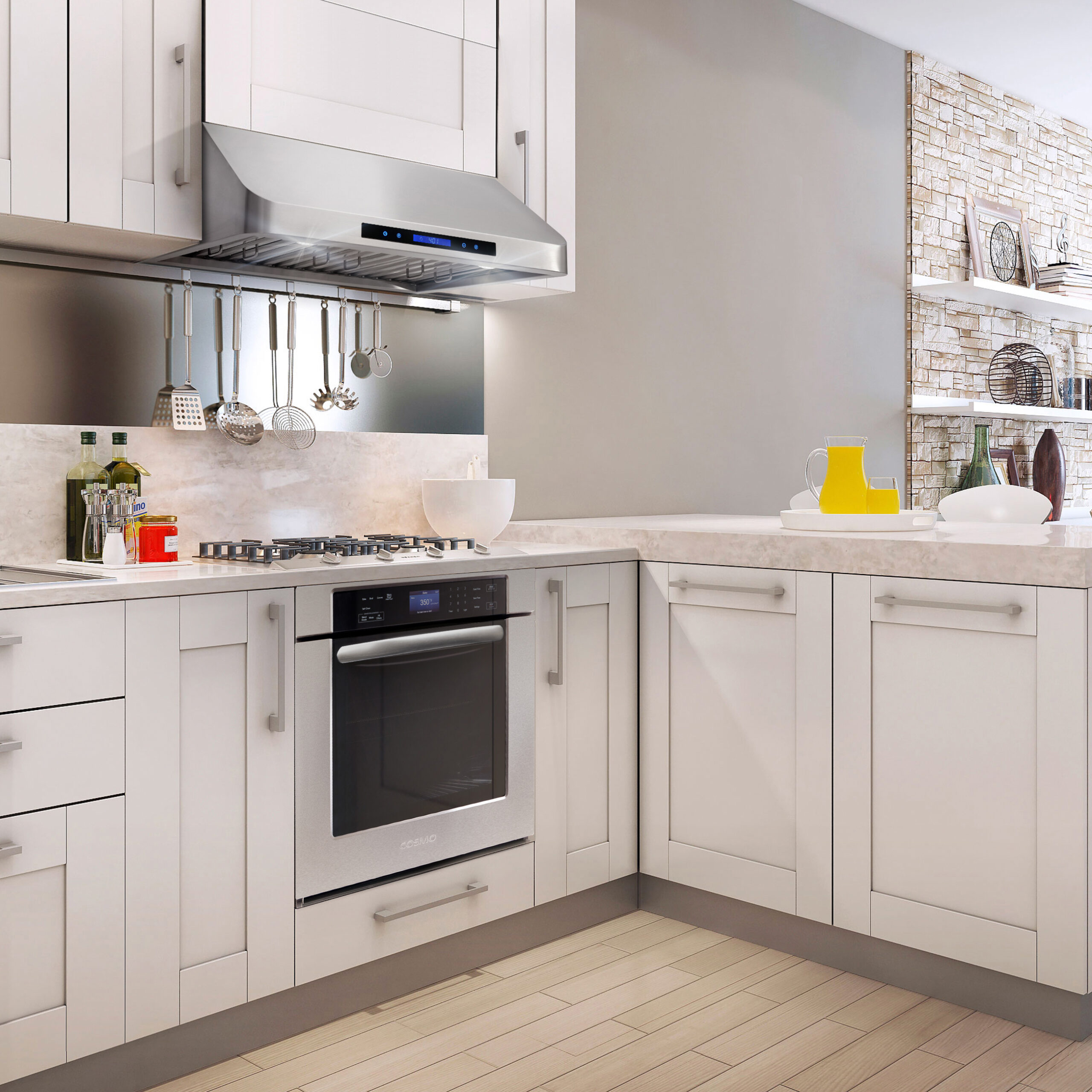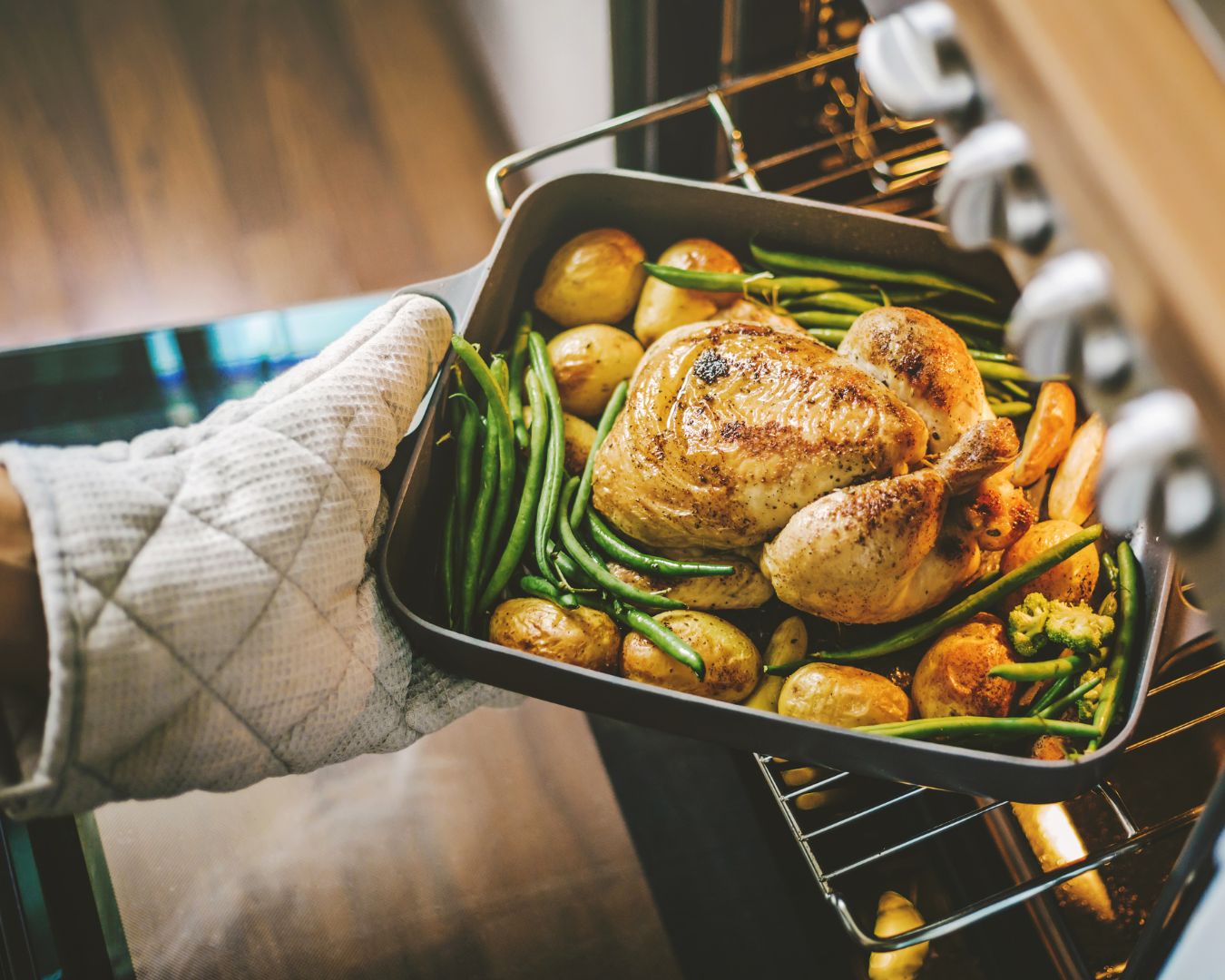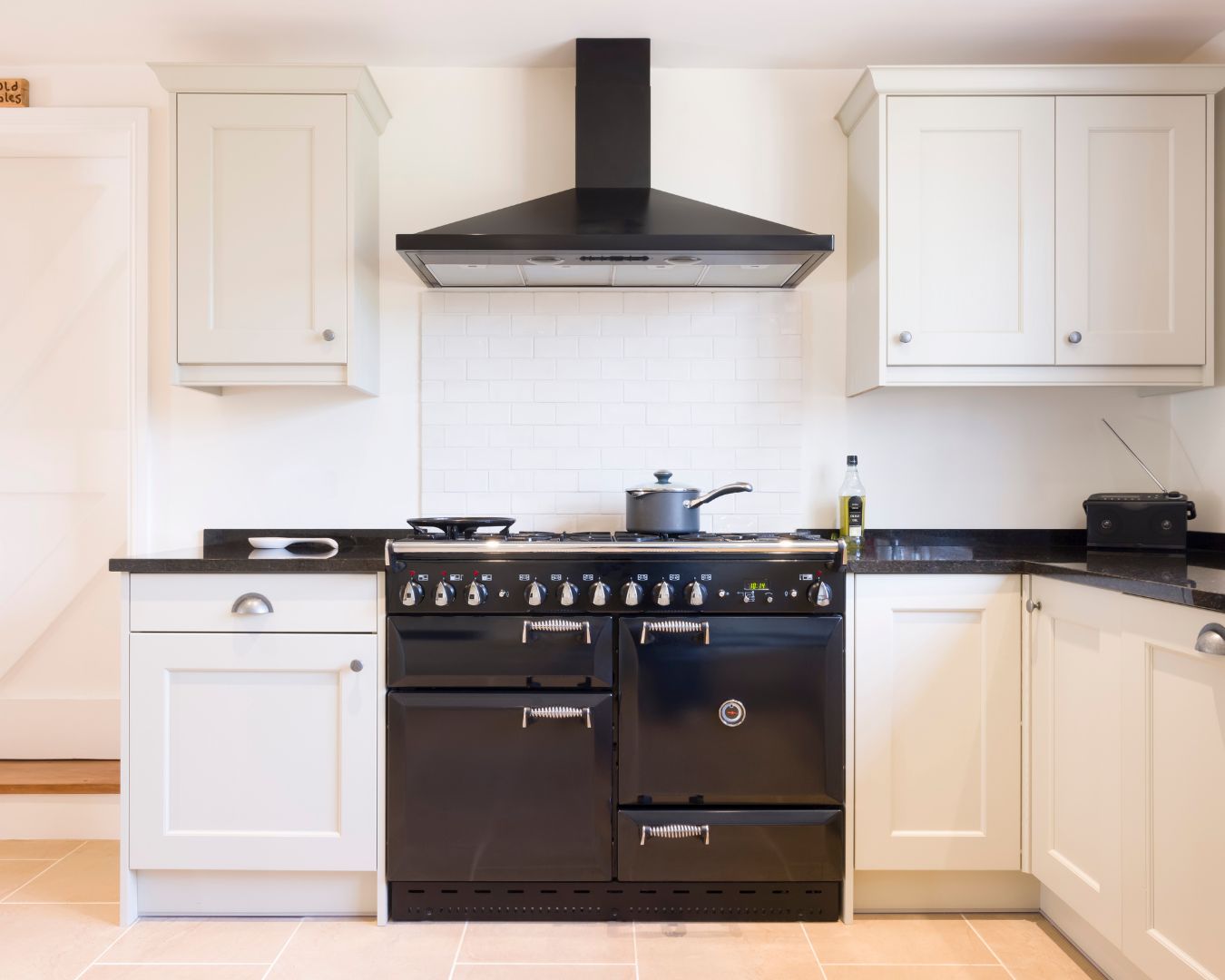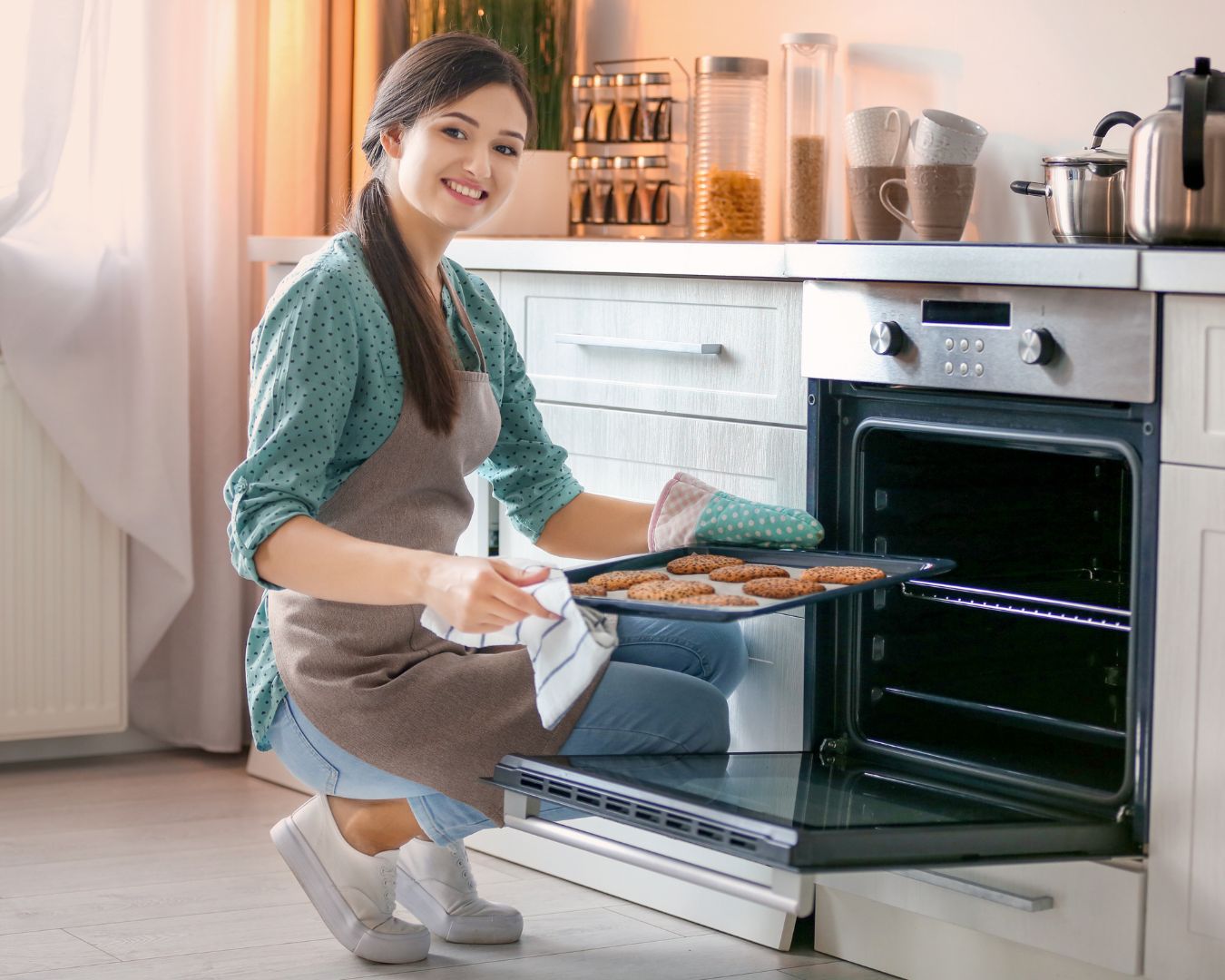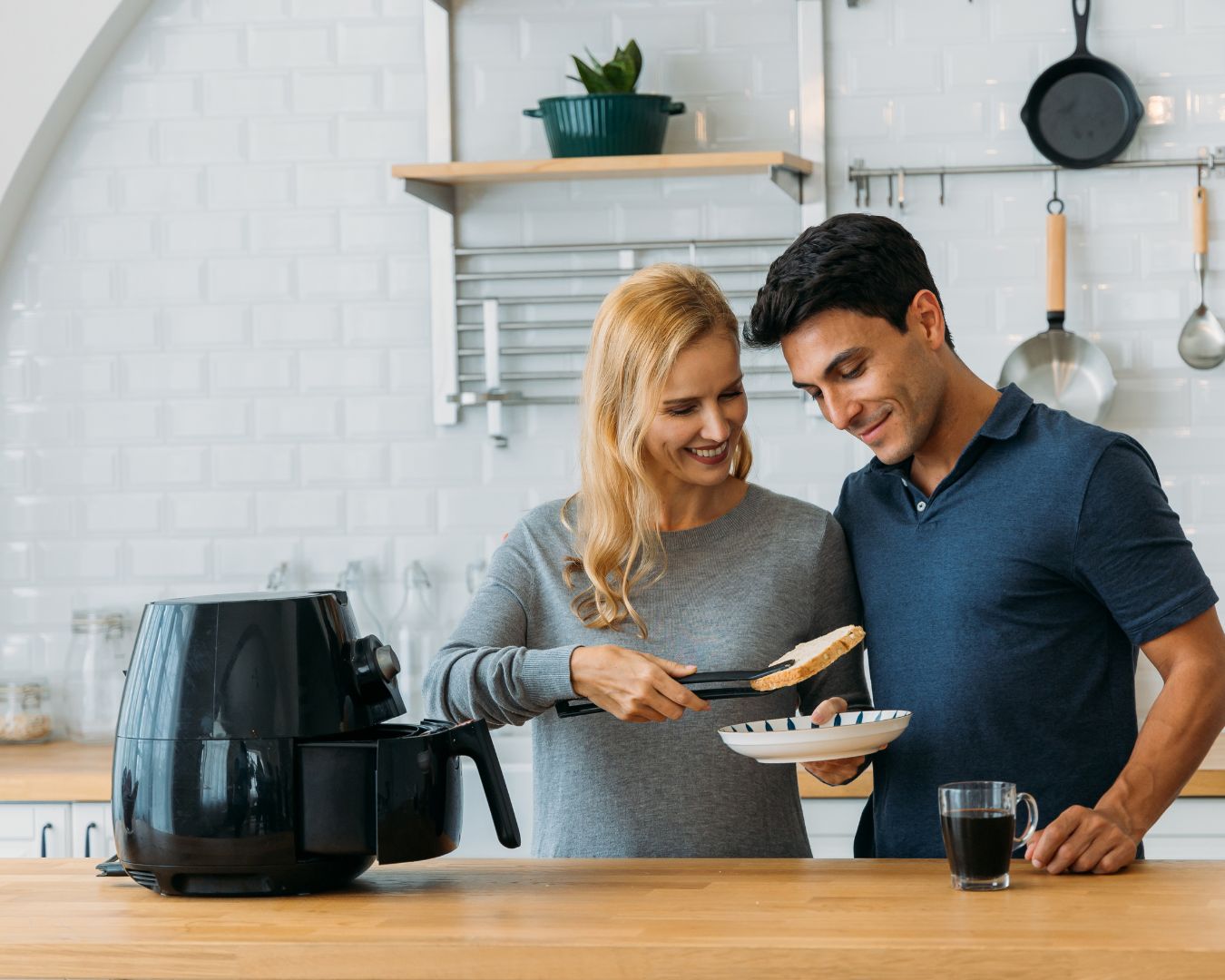The Ultimate Guide to Choosing the Right 30′ Under Cabinet Range Hood – Featuring COS-QS75
A well-ventilated kitchen is essential for maintaining air quality, preventing grease buildup, and enhancing your overall cooking experience. Whether you’re frying, searing, or simply boiling water, having a reliable range hood can make all the difference. Among the various types of range hoods available, under-cabinet range hoods stand out as a space-saving and efficient option. One of the top choices in this category is the COS-QS75 30-inch Under Cabinet Range Hood from Cosmo Appliances. This range hood is designed to keep your kitchen fresh and odor-free while complementing modern kitchen aesthetics. In this guide, we’ll dive deep into why an under-cabinet range hood is a smart investment, explore the standout features of the COS-QS7530, and offer practical installation and maintenance tips. Why Choose an Under-Cabinet Range Hood? If you are planning a kitchen upgrade or looking to replace an old range hood, it’s important to understand why under-cabinet range hoods are an excellent choice: 1. Space-Saving Design Unlike wall-mounted or island range hoods, under-cabinet range hoods are installed beneath kitchen cabinets, making them ideal for kitchens with limited space. They efficiently utilize the available area without compromising on performance. 2. Efficient Ventilation in a Compact Package Many homeowners assume that a smaller range hood means weaker ventilation, but that’s not the case. Under-cabinet range hoods like the COS-QS7530 offer high airflow capacities, ensuring effective removal of smoke, grease, and cooking odors. 3. Aesthetic Appeal and Seamless Integration Modern under-cabinet range hoods come in sleek and stylish designs that seamlessly blend with existing cabinetry. The COS-QS7530, with its stainless-steel finish, enhances the overall look of your kitchen while delivering efficient performance. 4. Easy Installation and Versatile Venting Options Under-cabinet range hoods provide flexible venting options, including ducted and ductless configurations, allowing homeowners to choose what best suits their kitchen layout. Key Features of COS-QS75 Now that we’ve covered why under-cabinet range hoods are a great option, let’s explore the features that make the COS-QS75 30-inch Under Cabinet Range Hood a standout choice: 1. Efficient Airflow (500 CFM) One of the biggest advantages of this model is its 500 CFM (Cubic Feet per Minute) ventilation power, which effectively removes smoke, steam, and airborne grease from your kitchen. Whether you’re cooking a quick breakfast or an elaborate meal, this range hood ensures your kitchen remains fresh and odor-free. 2. Ultra-Quiet Operation Unlike traditional range hoods that can be annoyingly loud, the COS-QS75 30 is designed to operate with minimal noise. With multiple fan speed settings, you can adjust the airflow intensity while keeping noise levels to a minimum. 3. Four Fan Speeds for Customized Ventilation Different cooking styles require different ventilation levels. The COS-QS75 offers four-speed fan control, allowing you to select the appropriate setting based on your cooking needs. Whether you need a low setting for simmering or high power for stir-frying, this hood has you covered. 4. Permanent Arc-Flow Filters for Grease Capture Maintenance is a major concern for homeowners, but the COS-QS75 simplifies this with its dishwasher-safe, Arc-Flow permanent filters. Unlike mesh filters that need frequent replacement, these filters are built to last, effectively capturing grease and debris over time. 5. Energy-Efficient LED Lighting Proper lighting is essential while cooking, and the COS-QS75 comes with bright LED lights that illuminate your stovetop. These lights are not only energy-efficient but also provide enhanced visibility, making cooking safer and more enjoyable. 6. Easy-to-Use Touchscreen Controls with Remote Modern kitchens require modern solutions. The COS-QS75 features an intuitive touchscreen control panel that makes adjusting fan speeds and lighting effortless. Additionally, it includes a remote control, allowing you to operate the hood from a distance, adding extra convenience to your cooking routine. Installation Tips for the COS-QS75 Installing the COS-QS75 is straightforward, but here are some key considerations to ensure optimal performance: Maintenance and Cleaning Tips To keep your COS-QS75 range hood performing at its best, follow these maintenance tips: A high-quality range hood is essential for maintaining a clean and efficient kitchen environment, and the COS-QS75 30-inch Under Cabinet Range Hood delivers on all fronts. With its efficient 500 CFM airflow, ultra-quiet operation, easy-to-clean filters, and modern touchscreen controls, this range hood is a perfect blend of performance and style. Whether you’re a casual home cook or a culinary enthusiast, investing in the COS-QS75 will ensure a healthier, fresher kitchen experience. Upgrade your kitchen today and enjoy cleaner air, better lighting, and enhanced convenience every time you cook!

